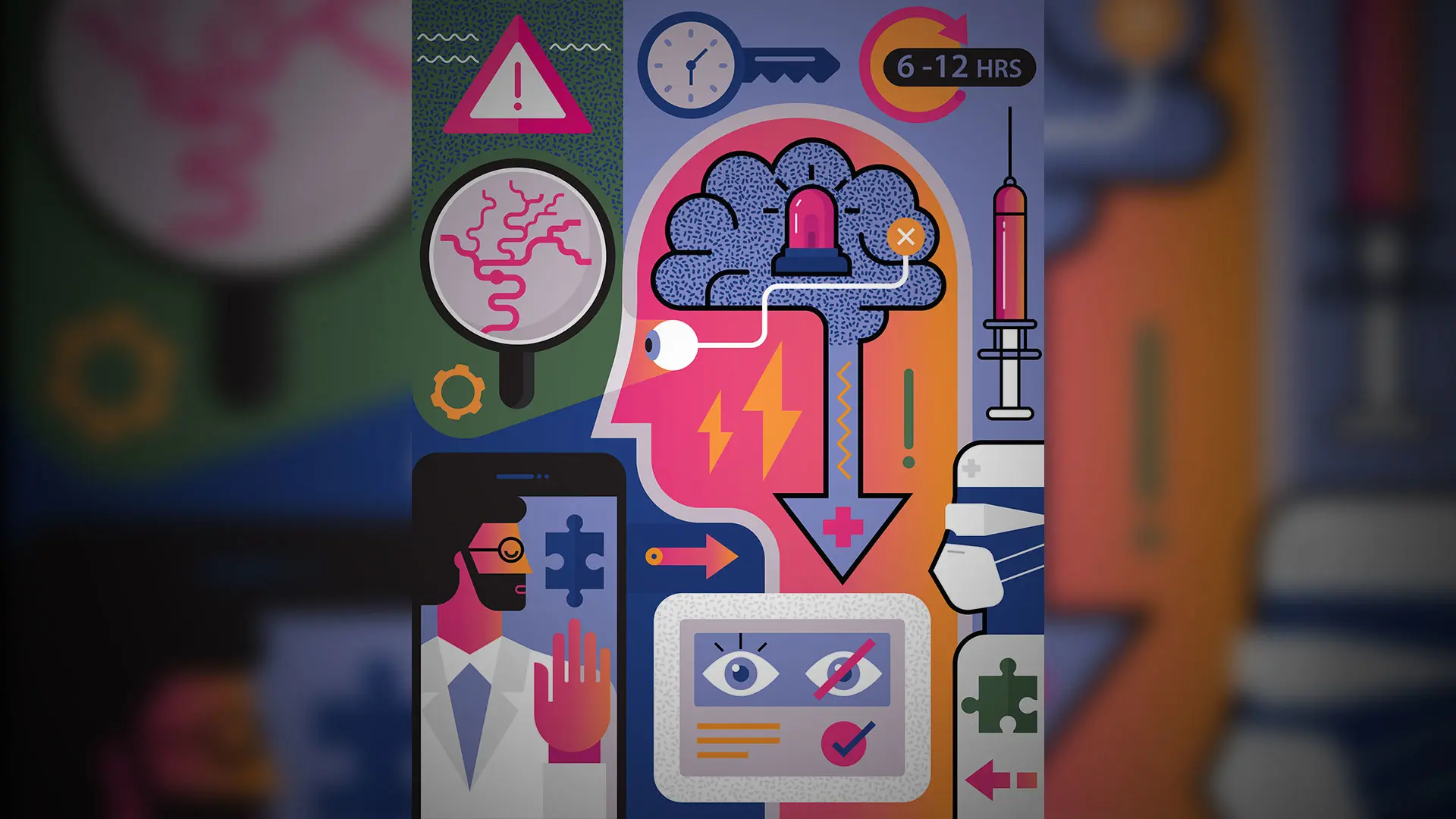The COVID-19 pandemic underscored the power and promise of remote diagnosis of patients by clinical experts. A novel program at New York Eye and Ear Infirmary of Mount Sinai (NYEE) has built on that paradigm to transform care for one of the most time-sensitive ophthalmic emergencies—central retinal artery occlusion (CRAO), or “eye stroke.”
In a study published in the June issue of Ophthalmology, NYEE physicians reported encouraging results for the CRAO remote consultation program, a collaboration between ophthalmologists and Mount Sinai’s stroke service. During the first 18 months of the program, visual acuity for most patients diagnosed with CRAO and treated with intra-arterial tissue plasminogen activator (IA-tPA) improved significantly within 24 hours and remained stable at one month. Specifically, six of the nine patients treated saw vision improve from worse than 20/200 to 20/100 or better. Four of the nine improved to 20/40 or better the first day.
“For an ocular emergency in which very few people historically improve at all, most of our patients experienced same-day recovery of their vision,” says first author Gareth M.C. Lema, MD, PhD, Vice Chair for Quality, Safety, and Experience for the Department of Ophthalmology at Mount Sinai, and a retinal specialist who helped develop the program. “It’s a proof of concept for an initiative that effectively combines the latest technology and treatment for CRAO with solid commitment from a wide range of clinical partners.”
In practice, the program integrates remote diagnosis and optical coherence tomography (OCT) in the emergency rooms of three Mount Sinai hospitals. When patients present with painless monocular vision loss, they are evaluated by the stroke neurology service, which uses an onsite automated OCT machine to acquire cross-sectional images of the retina at the resolution of just a few microns. Images are uploaded to retina specialists at NYEE, who are available around the clock to read and expertly interpret them.
Despite the criticality, delays in diagnosing eye stroke have been the norm across the country, with patients often waiting hours or days before seeking medical help. Even after arriving at an emergency room, diagnosis may be delayed by the availability of on-call house staff, time-consuming referrals to an ophthalmologist, and availability of imaging specialists who can perform fluorescein angiography, traditionally used to diagnose CRAO. In 2021, the American Heart Association called for development of systems of care to prioritize the diagnosis of retinal artery occlusion.
Mount Sinai’s unique point-of-care protocol fully responds to that imperative. Among the keys to its success, says Dr. Lema, is getting patients treatment as soon as possible, optimally within six hours or even less. (Improvement has been seen even within 12 hours, but less commonly.) According to the study, the mean time from “last known well” (the last time the patient remembers seeing well) to injection of IA-tPA was around nine hours, and from presentation at a stroke center to injection was around two and a half hours.
Another reason for the program’s impressive results has been the uncompromising buy-in from all participating parties.
“If you don’t have an onsite stroke team committed to getting usable images and data to remote retina specialists who are just as committed to making a diagnosis as quickly as possible, the program won’t be effective,” comments Richard B. Rosen, MD, Vice Chair and Director of Ophthalmology Research at NYEE. “We helped ensure its success by choosing OCT machines that are easy to learn and use, have a small footprint for busy emergency departments, and linked our eye stroke protocols to the existing protocols of stroke teams so that they didn’t have to change much.”
Dr. Lema sees vast opportunities for expansion of the initiative to hospitals both within and outside Mount Sinai—particularly in remote regions with a shortage of ophthalmology coverage—and beyond just CRAO.
“We’ve shown its effectiveness for retinal artery occlusion, but our remote consultation program could offer tremendous benefits for offsite diagnosis and treatment of many other ophthalmic emergencies.”
With the 12-hour tPA intervention model firmly in place, Dr. Rosen is turning his focus on new therapies targeting patients who can’t get the standard intra-arterial therapy. “Our goal is to be able to restore some vision to patients who come to us 24 and even 48 hours after the eye stroke took place.”
